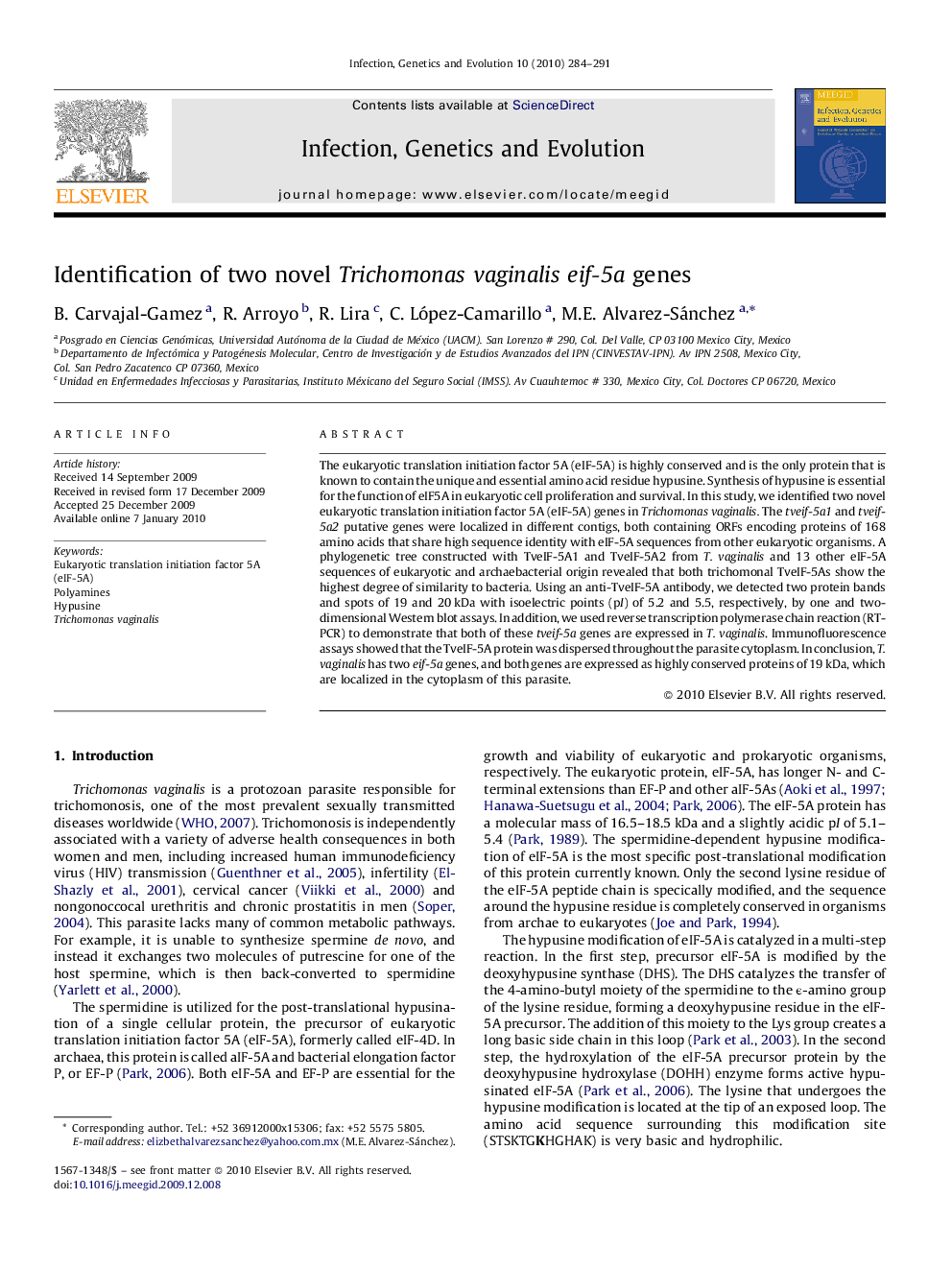| کد مقاله | کد نشریه | سال انتشار | مقاله انگلیسی | نسخه تمام متن |
|---|---|---|---|---|
| 2823326 | 1161382 | 2010 | 8 صفحه PDF | دانلود رایگان |

The eukaryotic translation initiation factor 5A (eIF-5A) is highly conserved and is the only protein that is known to contain the unique and essential amino acid residue hypusine. Synthesis of hypusine is essential for the function of eIF5A in eukaryotic cell proliferation and survival. In this study, we identified two novel eukaryotic translation initiation factor 5A (eIF-5A) genes in Trichomonas vaginalis. The tveif-5a1 and tveif-5a2 putative genes were localized in different contigs, both containing ORFs encoding proteins of 168 amino acids that share high sequence identity with eIF-5A sequences from other eukaryotic organisms. A phylogenetic tree constructed with TveIF-5A1 and TveIF-5A2 from T. vaginalis and 13 other eIF-5A sequences of eukaryotic and archaebacterial origin revealed that both trichomonal TveIF-5As show the highest degree of similarity to bacteria. Using an anti-TveIF-5A antibody, we detected two protein bands and spots of 19 and 20 kDa with isoelectric points (pI) of 5.2 and 5.5, respectively, by one and two-dimensional Western blot assays. In addition, we used reverse transcription polymerase chain reaction (RT-PCR) to demonstrate that both of these tveif-5a genes are expressed in T. vaginalis. Immunofluorescence assays showed that the TveIF-5A protein was dispersed throughout the parasite cytoplasm. In conclusion, T. vaginalis has two eif-5a genes, and both genes are expressed as highly conserved proteins of 19 kDa, which are localized in the cytoplasm of this parasite.
Journal: Infection, Genetics and Evolution - Volume 10, Issue 2, March 2010, Pages 284–291